With a forecast for clearing skies late last week, I made a last-minute decision Thursday afternoon to drive out to the Flint Hills of Kansas. It’s the nearest “dark sky” territory to me, and my primary goal was to scout for a night photography workshop I’m leading there in June. But I got much more than I’d planned for – serendipity strikes again.
Since the start of COVID, I’ve made many trips to this area west of Kansas City for night photography. Far from areas of strong light pollution, it’s a great place to shoot starry skies and the Milky Way. There are also some abandoned farms and homesteads, which can make great foregrounds for those photos. So with a list of some new locations I’d read about, I grabbed my gear and some snacks, loaded the car and headed out.
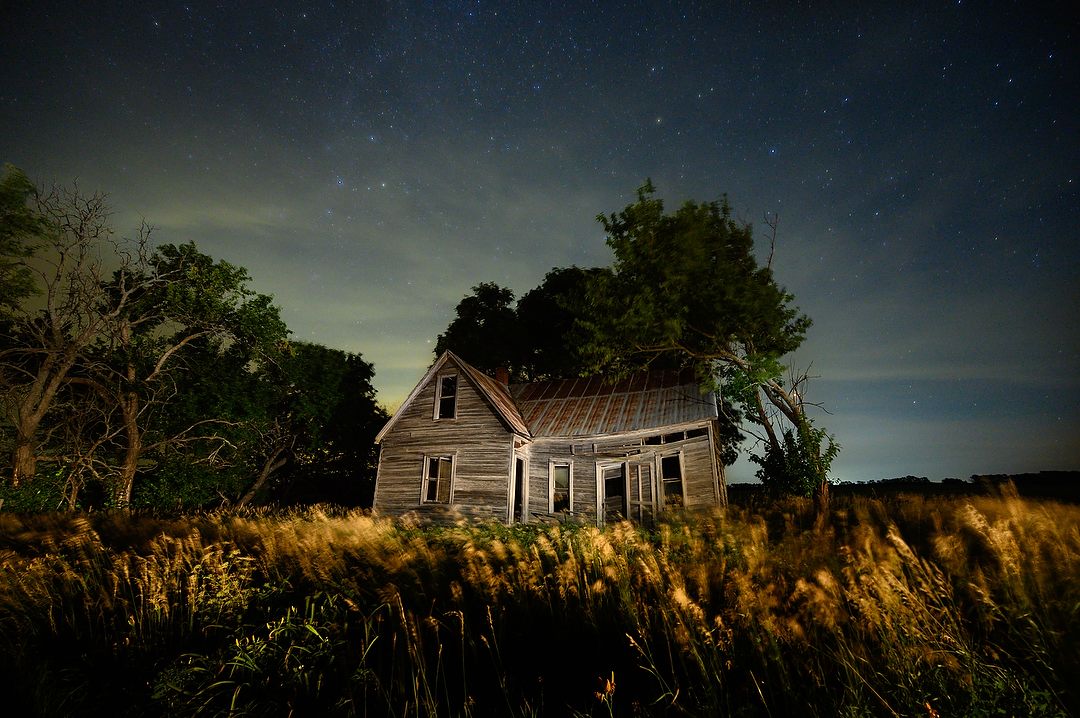
This is the kind of photography I’ve been doing in that part of Kansas for the past year. Nikon Z 6, Manual exposure, 3800K white balance, ISO 3200, 30-seconds at f/4, Nikkor Z 14-30mm f/4 S lens at 14mm.
Almost everything that afternoon and evening went as I’d planned, and you can read about that further below. One thing happened, though, that wasn’t planned. That’s where this story gets interesting.
My seventh stop that day was at an old, abandoned stone house a friend had told me about.
Thanks to GPS, even arriving in the dark I was able to find it, set back off the gravel road in a fenced field. After setting up my tripod up by the fence, I dialed in the focus and started checking exposure. And that’s when I saw the strangest thing up in the sky. A line of lights, slowly traveling the from left to right. Quickly tilting and locking the head of my tripod up to frame them, I shot one picture. “Weird,” I thought. I’ve seen satellites (and the International Space Station) many times on my night shoots, but never a group like that.
After they passed, I went back to photographing the old home. For most of my night photography, I use Lume Cubes to light the subject. In this case, I decided to use one Lume Cube on a seven-foot stand with a snoot to create a narrow beam of light. Using an app on my phone, I then adjusted the brightness of the Cube to match that of the stars and the horizon glow. Once that was done, I began shooting photos of the home and stars. And then, off to my left, I saw another string of lights coming, about twenty minutes after the first group. I managed to shoot two frames that included the lights above the house, and then they were gone again. I was amazed at my luck. If they’d been elsewhere in the sky, or come through earlier or later, I’d have had no picture. After a few more frames of just the house and sky, I packed my gear and headed for my last location of the night.
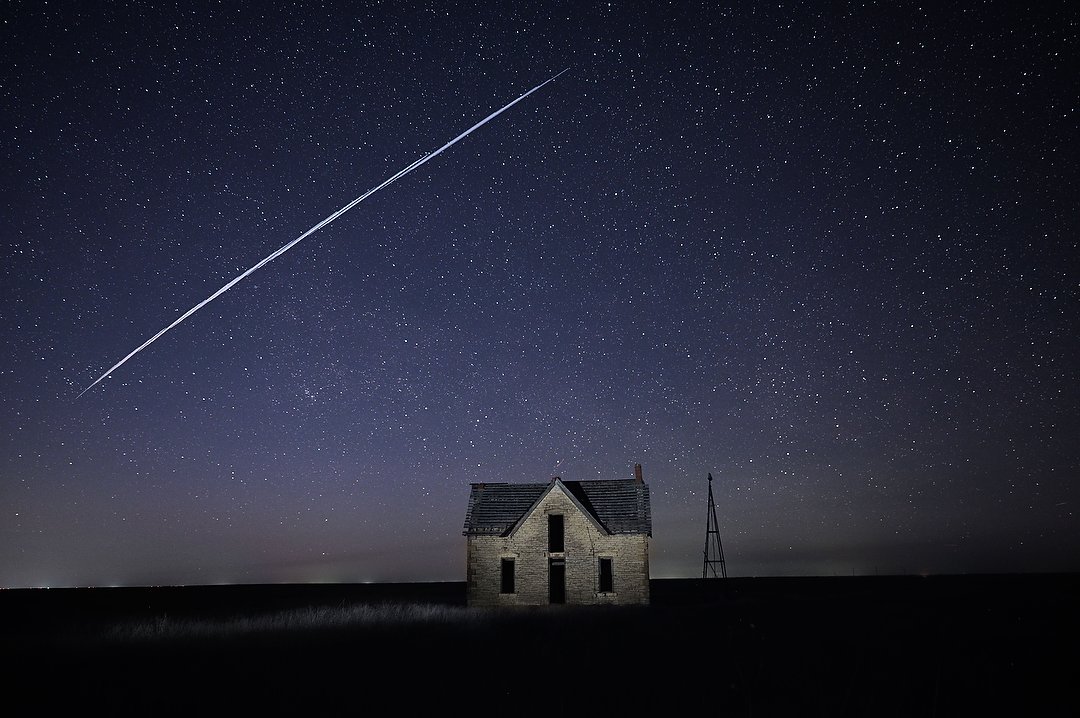
A group of SpaceX StarLink satellites pass over an old stone house in the Flint Hills of Kansas Thursday night. Launched from The Kennedy Space Center in Florida on Tuesday, as they reach orbit they’ll spread out and be less visible. Nikon Z 6, Manual exposure, 3400K white balance, ISO 2000, 15-seconds at f/2.8, Nikkor Z 24-70mm f/2.8 S lens at 28mm. Photo copyright Reed Hoffmann.
The next morning, after downloading the photos, I did a Google search for “string of lights in sky.” And quickly found that SpaceX had launched sixty satellites on Tuesday, which were visible the next couple of days as they moved from lower altitudes to their eventual orbits and began spreading out. That’s what I’d seen and photographed, and also when my two decades working as a photojournalist kicked in. I knew the photo was unique, and tied in with a news event. So I emailed an old friend who’s an Associated Press photographer here in Kansas City to see if the AP might be interested. After sharing it with them, I then offered it to the visuals editor of the Kansas City Star (where my wife is also an editor). He wrote up a short story, and it posted the next day on the Star’s website.
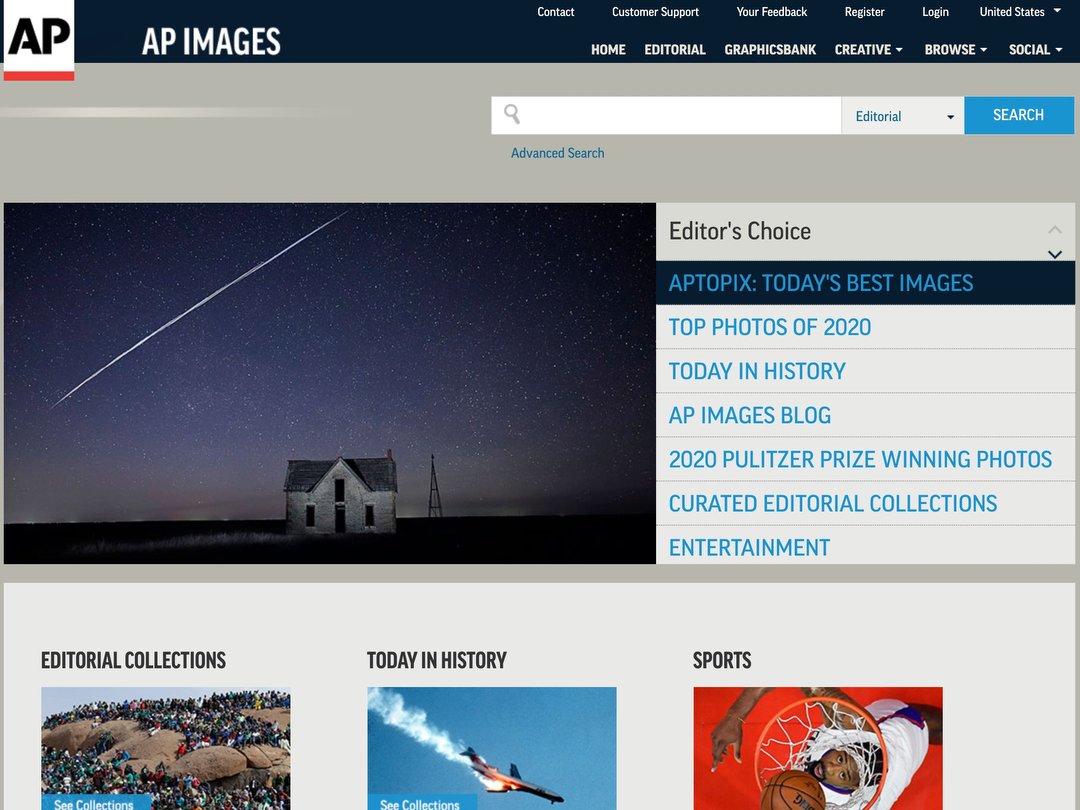
I was surprised to go to the Associated Press website and find my photo being using as their main image. They’ve kept it there for the last couple of days.
The Associated Press liked it well enough to make it the lead photo on their splash page. The photo and story on the Star’s website became the most popular on their website that day. The following day, there was so much interest in the photo on the AP’s website that they followed it up with a story, which then ran in newspapers and websites across the U.S. And all because I was lucky enough to be in the right place at the right time, and knew what to do with that luck. As an old friend used to say, “I’d rather be lucky than good.”
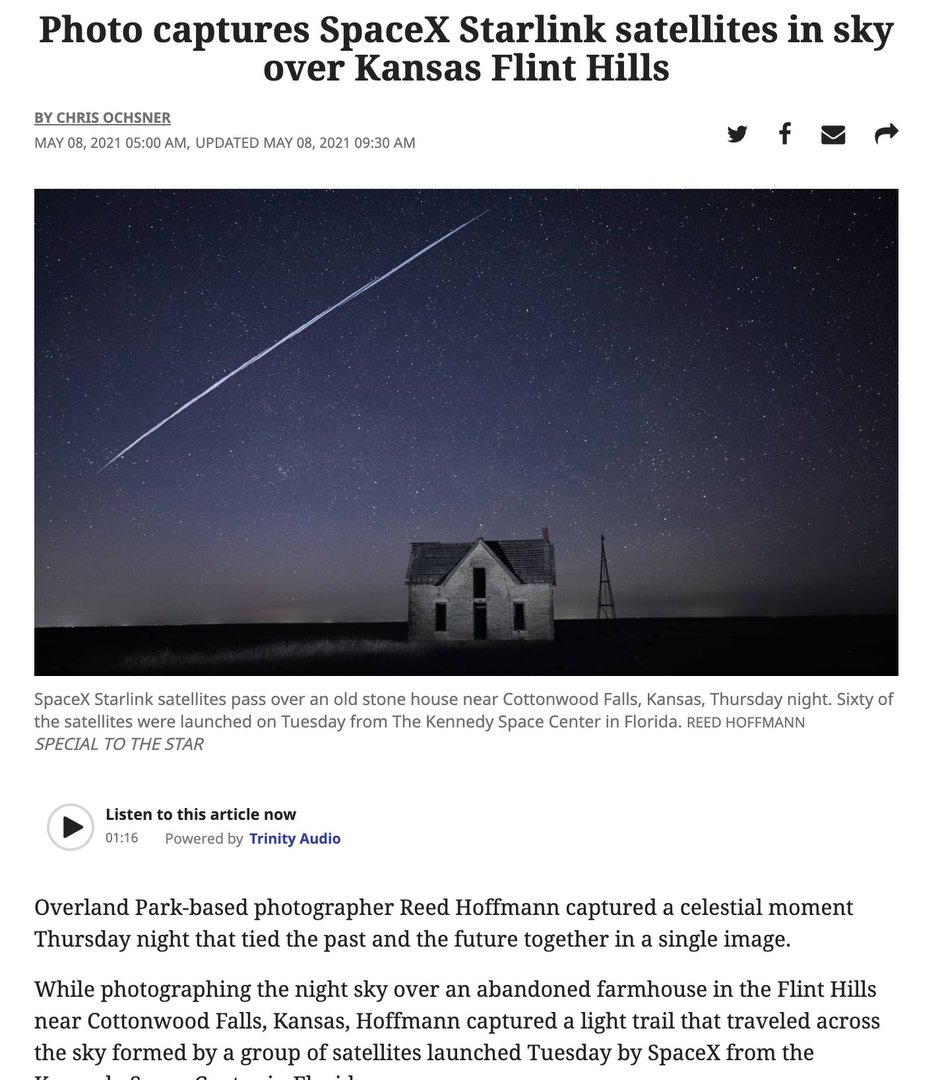
And here’s the photo, and story, on the Kansas City Star’s website.
The rest of the day went well too. My first stop was Bushong, KS, a small town that grew up around a railroad line built through there in the 1880s. It never recovered after the great recession, and only about 30 people live there now. I knew there was an old brick high school that closed in the 1970s, and some other old buildings as well.
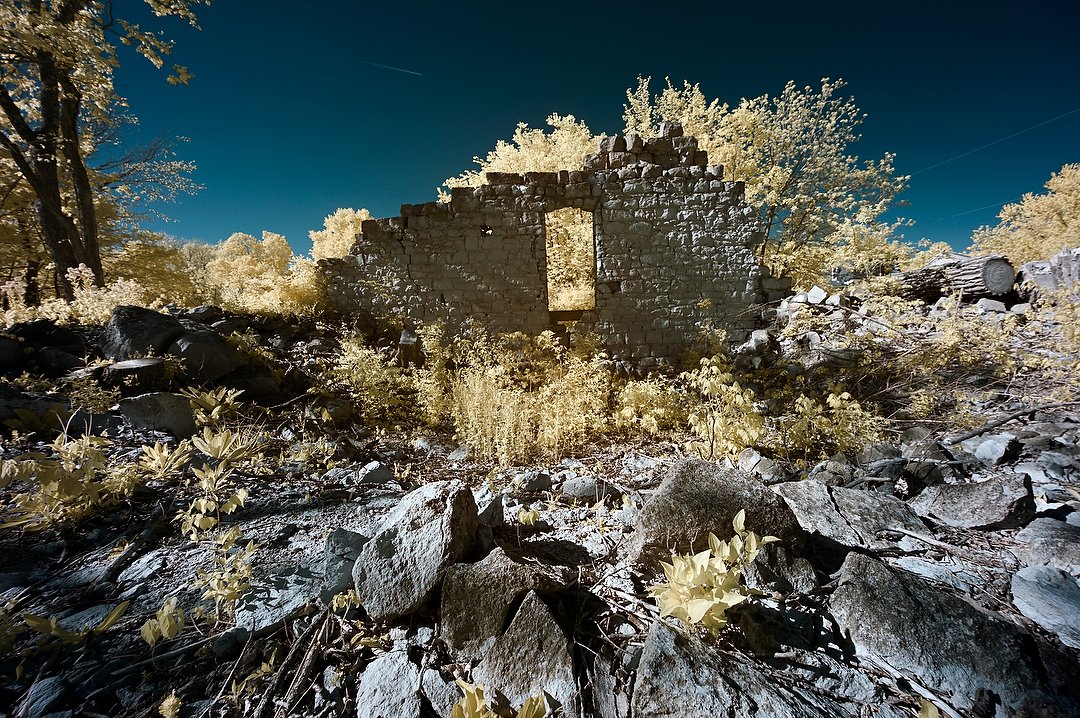
Infrared image of all that’s left of a building in Bushong, KS. Nikon Z 6 converted to full spectrum, Aperture Priority, Preset white balance, ISO 100, 1/320 at f/7.1 in Matrix metering, +1.0 EV, Nikkor Z 14-30mm f/4 S lens at 14mm.
After that I drove Kansas Highway 177 south through the Tallgrass Prairie, occasionally stopping for photos in the late afternoon light as I headed to my next location, Teter Rock. Part of that drive was on gravel roads, and I took a short detour through some open range land to enjoy the expansive views. The final stretch of “road” (and I use that term loosely) up to Teter Rock was heavily rutted with some very muddy sections. I did get all the way in, but while I had planned to stay and shoot at night, was worried I might not get my car back out in the dark.
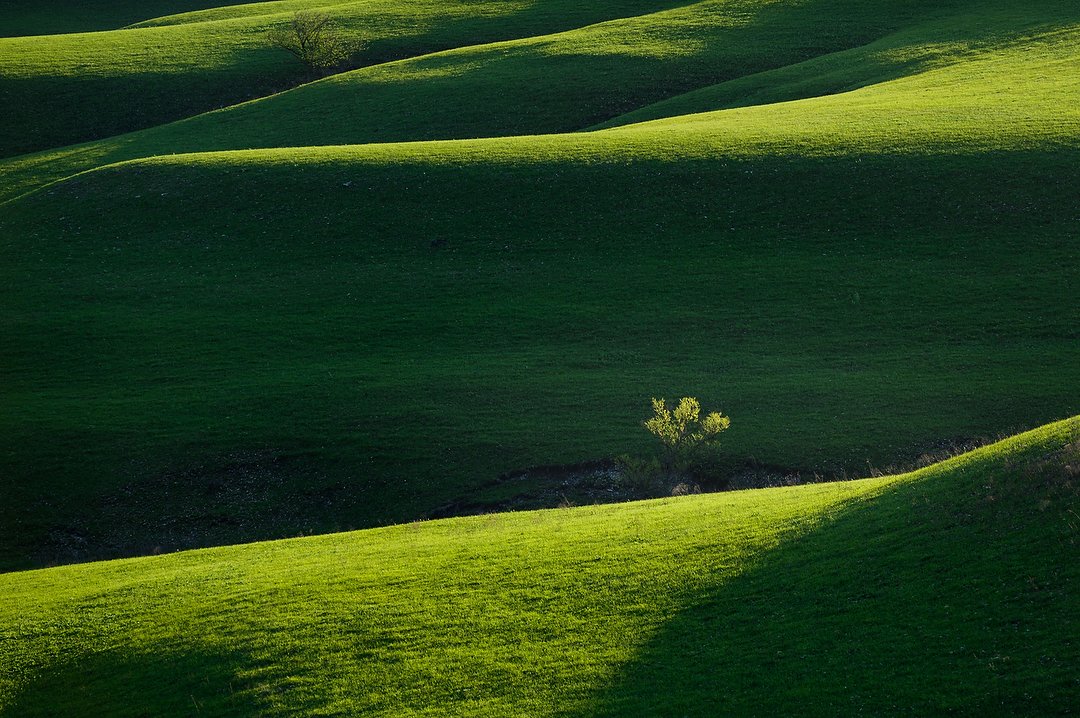
The Flint Hills of Kansas. Nikon Z 6 2, Aperture Priority, Sunny white balance, ISO 160, 1/125 at f/7.1 in Matrix metering, -0.3 EV, Nikkor Z 24-200mm f/4-6.3 VR lens at 170mm.
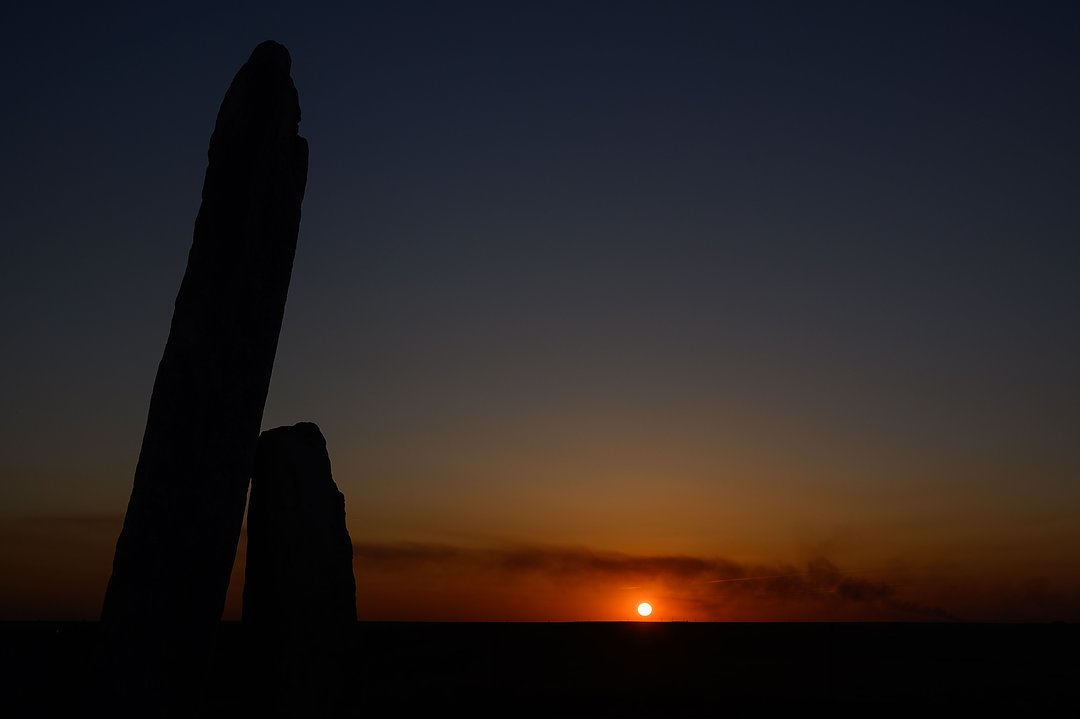
Teter Rock at sunset, with smoke from grass fires contributing to the rich colors. Nikon Z 6 2, Aperture Priority, Sunny white balance, ISO 160, 1/640 at f/10 in Matrix metering, -2.0 EV, Nikkor Z 24-200mm f/4-6.3 VR lens at 38mm.
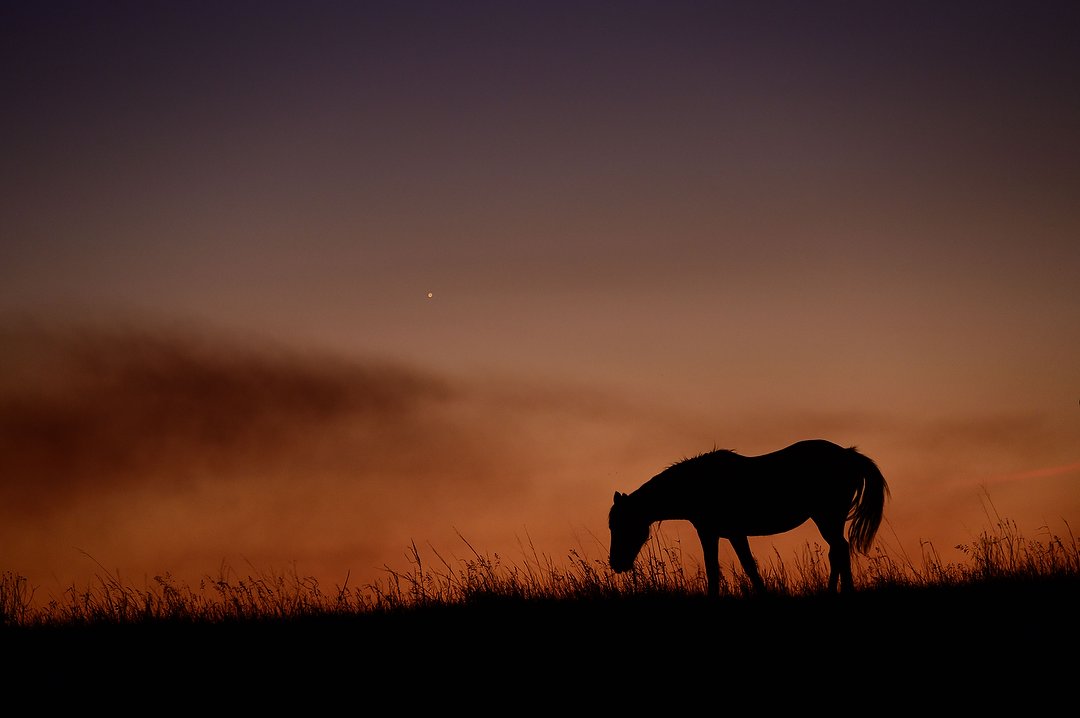
Leaving Teter Rock, I found a lone horse silhouetted against the fading sunset below a star (probably planet) in the sky. Nikon Z 6 2, Aperture Priority, Sunny white balance, ISO 1600, 1/100 at f/6.3 in Matrix metering, -1.0 EV, Nikkor Z 24-200mm f/4-6.3 VR lens at 200mm.
After that, it was on to the stone house and the satellites.
My final stop of the day (now late night) was Lower Fox Creek School. It’s a famous old one-room schoolhouse in the Tallgrass Prairie National Preserve. Perched on a hill with a gravel parking lot below, it can be visited (outside, at least) any time of the day or night. That’s where I’m taking a group in June for a Milky Way workshop, and while I’ve photographed it before at night, never from the angle that would be needed to include the Milky Way. That’s why I wanted to visit now, so I could recommend the lens needed, and at the same time figure out how I’d light the schoolhouse for the group.
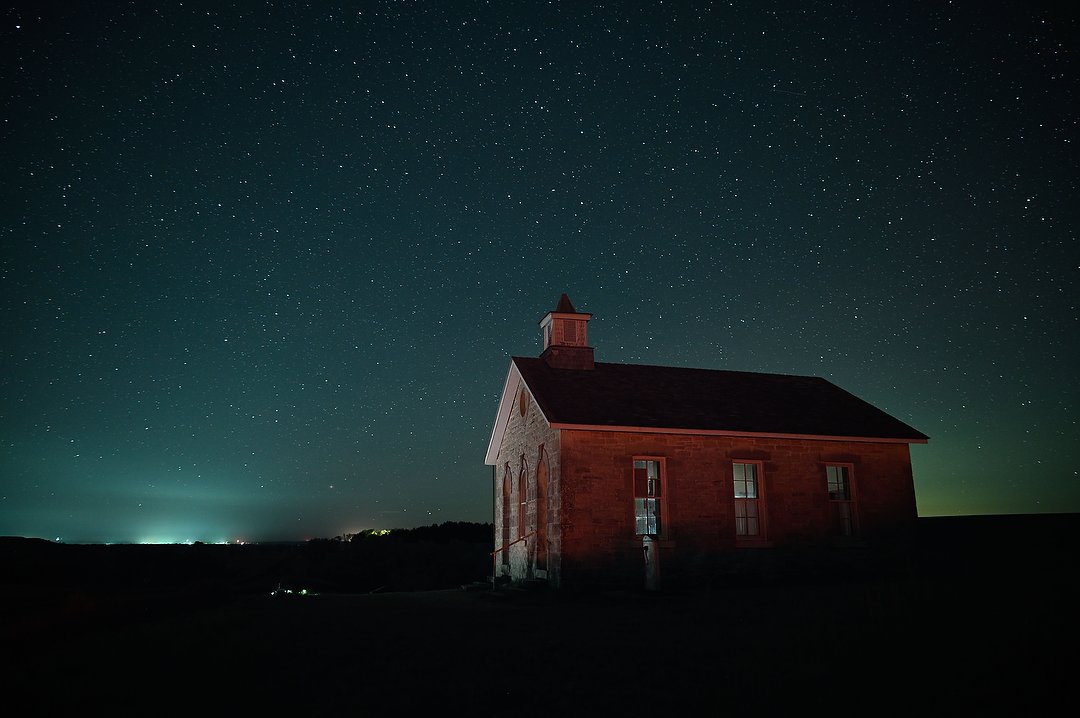
Lower Fox Creek School, lit by a pair of Lume Cubes. Nikon Z 6 converted to full spectrum, Manual exposure, 3400K white balance, ISO 2000, 20-seconds at f/2.8, Nikkor Z 24-70mm f/2.8 S lens at 24mm.
While the entire day’s shoots went well, the satellites passing overhead were obviously the highlight. Serendipity. Right place, right time, with a little luck thrown in. It’s those unexpected moments like this that make photography magical for me.
(If you’re interested in buying a print of “The Future and the Past,” let me know)
(If you like this story, please share it with your friends and let them know about the links on photography that I post on my business Facebook page. I’m also on Instagram and Twitter, @reedhoffmann. And if you’re curious about the workshops I teach, you can find them here. And, you can subscribe to this blog on my home page.)

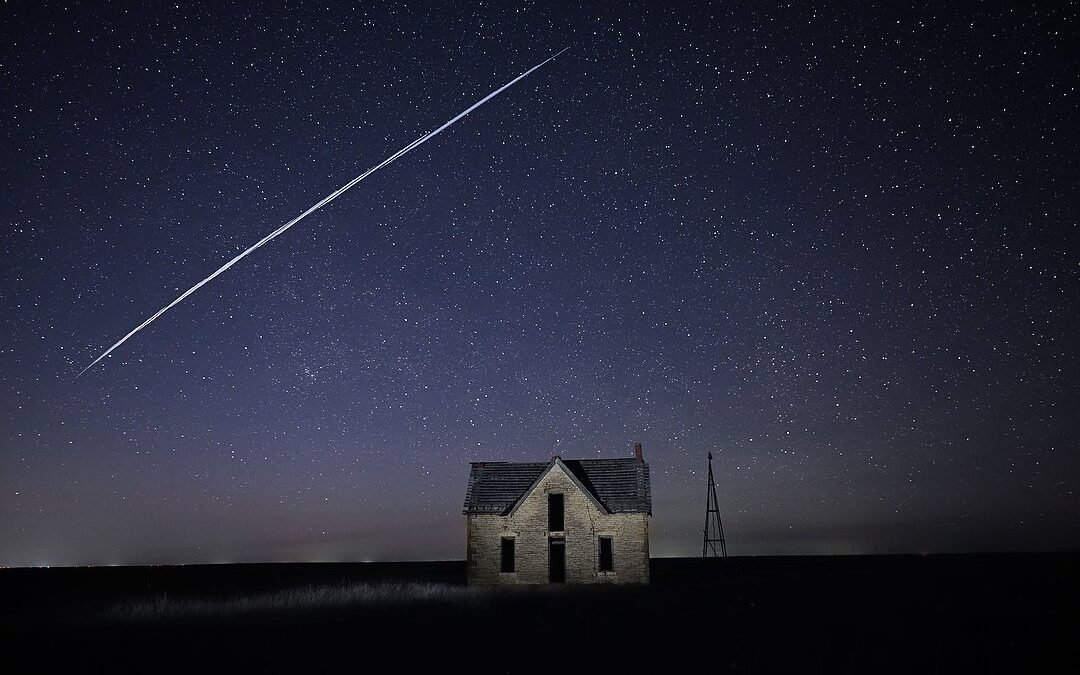
A most excellent photo!
Wow! Right place. Right time. Right skill sets. Beautifully captured Reed!
Wow. What a great story. Indeed lucky. But none of this would of happened if you weren’t there to begin with. Great job.
Beautiful photo’s Reed. It’s more than luck that you where able to get the photo of the Space-X satellite passing over. You knew how to get the “shot”! 📷😎👍😊👋
Thanks Joel.